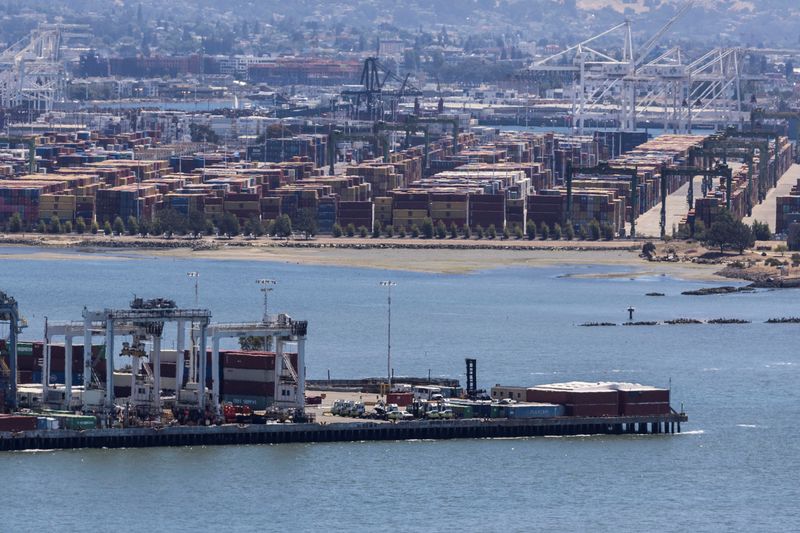WASHINGTON (Reuters) - U.S. import prices fell in May and the annual decrease in prices was the sharpest in three years, providing another boost for the Federal Reserve in the fight against inflation.
Import prices dropped 0.6% last month as the costs of energy products and food declined after increasing 0.3% in April, the Labor Department said on Thursday.
Economists polled by Reuters had forecast import prices, which exclude tariffs, dropping 0.5%.
In the 12 months through May, import prices plunged 5.9%. That was the biggest year-on-year decline since May 2020 and followed a 4.9% fall in April. Annual import prices have now decreased for four straight months.
The government reported this week that consumer prices edged up in May, while producer prices fell.
The Fed kept interest rates unchanged on Wednesday for the first time since March 2022 when the U.S. central bank embarked on its fastest monetary policy tightening campaign in more than 40 years. But the Fed, which has hiked its policy rate by 500 basis points in this tightening cycle, still anticipated rate increases this year.
Imported fuel prices fell 6.4% last month after increasing 4.1% in April. Petroleum prices dropped 5.9%, while natural gas tumbled 26.1%. The cost of imported food fell 1.1%.
Excluding fuel and food, import prices edged up 0.1%. These so-called core import prices dipped 0.1% in April. The dollar has been bouncing around versus the currencies of the United States' main trade partners this year.
Prices for imported capital goods ticked up 0.1% in May. The cost of consumer goods excluding motor vehicles was unchanged.

The report also showed export prices declined 1.9% in May after slipping 0.1% in April. Prices for agricultural exports dropped 2.1% weighed down by corn, soybeans and wheat.
Nonagricultural export prices fell 1.8%. Export prices plummeted 10.1% year-on-year in May, the biggest annual decrease since the government started tracking the series September 1984, after dropping 6.0% in April.